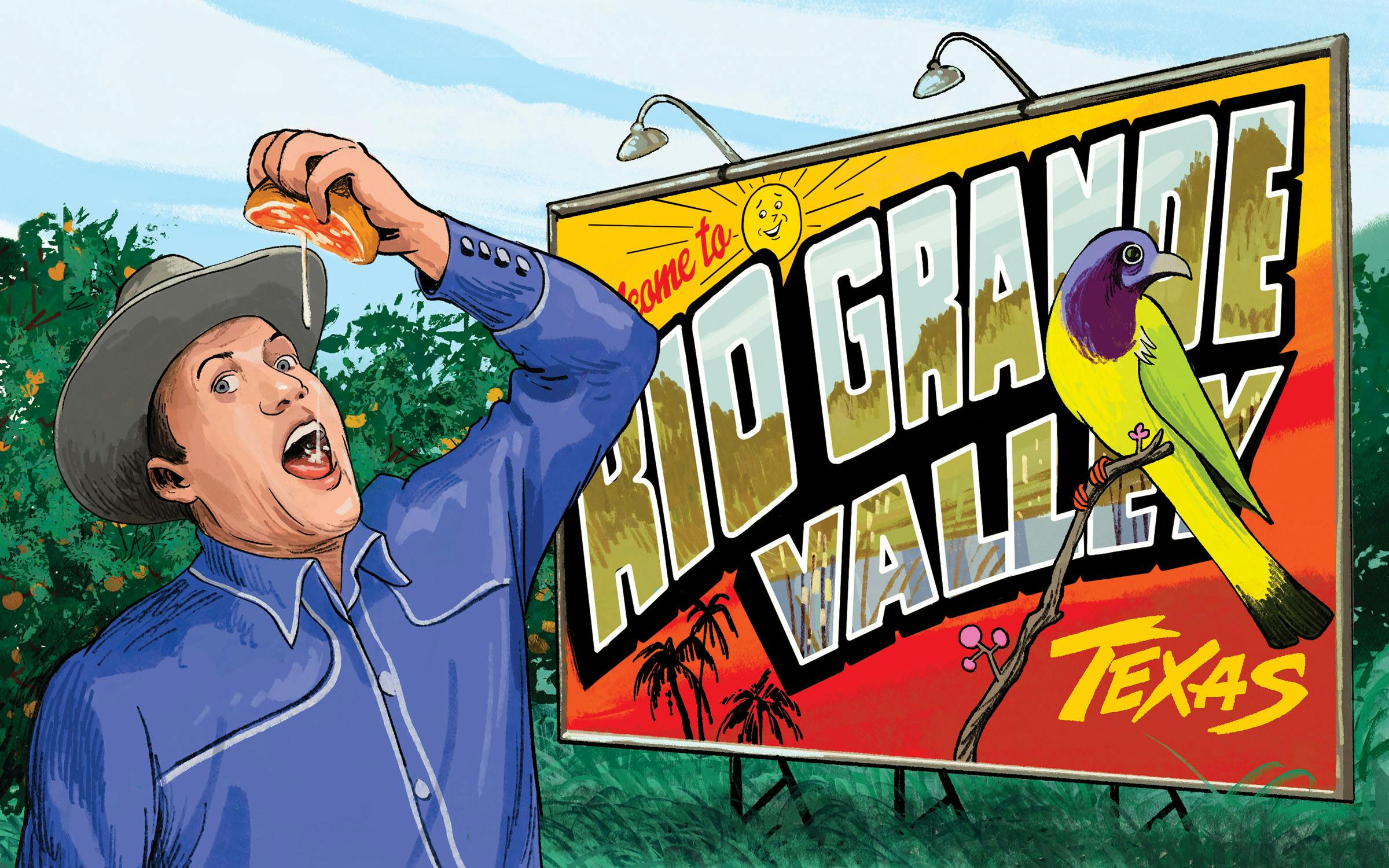Q: Two friends at my weekly 42 dominoes game are from the Rio Grande Valley. When I asked them why Texans call a flat floodplain a “valley,”
when a valley is actually the low spot between hills or mountains, their answer was, more or less, “It’s a valley.” Is it, though?
Tim Ziegler, Austin
A: The southernmost portion of Texas has, over the years, been known by many a moniker, among them the Rio Grande Valley, the Lower Rio Grande Valley, the Valley, El Valle, the RGV, and the 956, which is, of course, the area code for most of the region.
A valley, however, this area is not, at least in a strictly topographical sense. If you had to give the place a more accurate name, you’d probably go with the Rio Grande Delta or the Rio Grande Distributary Delta or the Rio Grande Deltaic Plain. But what can the Texanist say—historically the Lone Star State has had a fairly screwball relationship with geographical nomenclature. What we call North Texas, for instance, doesn’t stretch as far north as the Panhandle; the town of West, Texas, is in north Central Texas; and the West Texas town of Notrees reportedly did have one native tree—before it was cut down to make way for a gas plant. So, between friends, why not a valleyless valley?
But if the “valley” sobriquet is vaguely baffling today, consider that it would have absolutely flummoxed Texans of yore. A century ago, the area bordering the lower portion of the Rio Grande consisted of sparsely populated scrubby ranchland. Then, in the first years of the twentieth century, the enterprising Texan Benjamin Franklin Yoakum (the eponym of tiny Yoakum, located just north of Victoria) recognized the region’s agricultural potential and set out to ensure its success. Heading up a syndicate, he arranged for the construction of the St. Louis, Brownsville and Mexico Railway, which arrived in the early 1900s, allowing for an easy route to market for produce. Soon after, large-scale irrigation efforts were undertaken.
Then semibombastic promotional campaigns, aimed at attracting Midwestern farmers, dubbed the area the Magic Valley. Which, if the Texanist does say so himself, is quite the catchy appellation, right up there with Merkel: Gateway to Abilene. So catchy, in fact, that Yoakum’s dreams for the area came true, much to the delight of everyone who prefers their grapefruit delicious and ruby red, rather than puckeringly tart and pallid yellow like the varieties that had prevailed before South Texas farmers came to the rescue.
So, while the Rio Grande Valley may not be a valley in the dictionary-definition sense of the word, it is definitely the Valley—at least in the magical “it is if we say it is” sense.
The Texanist, offering fine advice and keen observations since 2007, is senior writer David Courtney. Send him your questions at [email protected] and be sure to tell him where you’re from.
This article originally appeared in the October 2024 issue of Texas Monthly with the headline “The Texanist.” Subscribe today.

